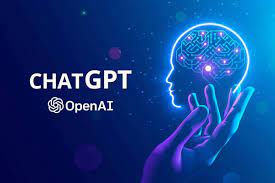Generative AI and building competitive advantage
How can technopreneurs harness breakthrough Generative AI technology in their AI solution to build competitive advantage in product, design, marketing and even optimising business operations?
Generative Artificial Intelligence (AI) uses natural language processing (NLP) and machine learning (ML) algorithms to generate new content – including audio, video, images, text – that mimics human generated content.
Generative AI is different from ML models and technologies in that it creates “new” content rather than just observe, recognise, classify and predict patterns from the data. Therefore, Generative AI can be the breakthrough that gives businesses an opportunity to use its existing data to develop innovative solutions in product development, design, marketing and optimising business operations.
Whilst ChatGPT has ignited the imagination and made the world pay attention to Generative AI, hundreds of AI advances are quietly being made every month, driven by technological acceleration (such as cloud computing, processing power and open source) combined with an almost unmanageably huge volume and complexity of data being generated.
Understanding foundation AI models, base of AI stack
Large language models (LLMs) such as GTP 3/GPT 3.5 are the foundation AI models and they make up the base of the AI stack. Foundation models are trained on massive sets of data collected from the internet for a wide range of topics. The capabilities of these models depend on how they are trained and the quality/type of training. As foundation models are frozen in time, they can’t look up dynamic data or any real-time information to provide today’s weather report, for example.
Deploying foundation Generative AI models such as GPT-class models in production requires an advanced ML operation platform, a large team of annotators (humans) to generate training data, and engineers trained to optimise performance. But it’s not just talent. Training a model using almost the entire internet is an expensive process and can cost several millions. Estimates indicate that OpenAI’s GPT-3 was trained on around 45 terabytes of text data at an estimated cost of several million dollars.
As the development of a foundational Generative AI requires significant resources in terms of talent and capital, making it an endeavour that only a handful of large, well-resourced tech companies have attempted. Many of the big tech players now have their own foundation models and will compete to have offerings in this space.
Differentiation through middle layer models, powered by specialised data
As foundation models offer wide breadth and require substantial work/resources to derive value for specific use-case, companies will benefit from focusing on building smaller models, trained on highly detailed, specific data. Such middle layer models have the potential to outperform foundational models in their specific domains when developed for a particular application, industry, vertical, or use case.
Companies can differentiate themselves by taking a foundation AI model and tuning it to the needs of a particular business or industry. This is powerful in fields where data is highly sensitive and specific domain knowledge is required to make accurate predictions, like finance, insurance, climate, healthcare, energy, and manufacturing.
AI-first data architecture
Technopreneurs and business leaders should reconsider their approach to data architecture, moving away from viewing it solely as a means for data-warehouse storage and analytics and instead adopting an “AI-ready data strategy.” This includes focus on meta-data collected and data strategies to create differentiation through technologies trained on internal specialised data. The adoption of an “AI first” architecture will establish the groundwork for realising gains in both operational efficiencies and product innovation. Organisations that can bring unique datasets, train solutions, and generate precise and relevant answers are more likely to be highly valued for their offerings.
AI-first architecture requires technopreneurs to start adopting a “model mindset”, which will enable recognition of a business problem first and then understanding which AI to apply for solving the problem. This approach will also involve incorporating AI safety rules into the modelling process, such as using only data that complies with customer data privacy policies and ensuring the quality of input data to prevent model bias.
Ultimately, it’s the quality of the data that matters.
Products and companies can be transformed by incorporating an AI-first approach to data collection, using high quality data to train specialised models that complement the foundation models developed by the big players.
